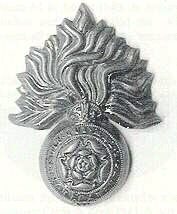

BROOKS, Leonard Arthur
Private, 282045
1/4th Battalion,
ROYAL FUSILIERS
9th Brigade, 3rd Division
who died on
Thursday, 16th August 1917. Age 25
The Commonwealth War Graves Commission records show him as the son of the late Mr. Brooks and Mrs. Brooks, husband of Sarah E. Brooks of 9 Glyn Road, Homerton, London.
He was normally called Arthur. Arthur's grand parents were Samuel Wright and Lucy Pooley, who married at Abberton Church on the 4th November 1860. His mother was Martha Pooley Wright, who was baptized at Langenhoe Church on February 26th 1871. Like several other young girls from the village, she left as a teenager to work as a servant in London. Martha went to work for the mother of Winston Churchill at their London home, which was at 35A Great Cumberland Place.
Martha used to tell the story of how she was making Winston's bed one day when he was on leave. It was at a time when men were changing their fashion habits and switching from nightgowns to pajamas. In a fit of madness, she decided to try on Winston's pajamas just as the great man ascended the stairs. Martha hid behind the door but was spotted by her reflection in a mirror.
Martha married in London and had a family. The details are not known but her married name was Brooks and it is believed there were sons; Arthur, David and Charles and a daughter Pearl. Martha was widowed possibly in 1907/8 and returned to Langenhoe about that time, where she married Sydney Mountford and had four daughters :- Edith Hannah 19th June 1910, Ivy June 11th 1911, and twins; Helen Elsie & Mary Ethel 21st June 1913. Sydney was a farm labourer.
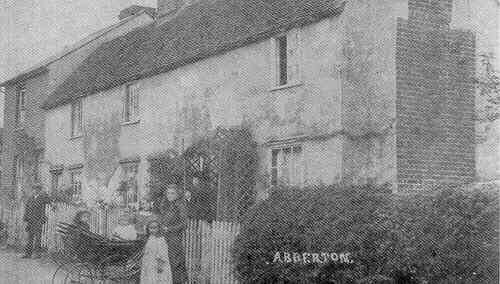
The picture is taken around 1910 and shows Martha Mountford's home. The Brooks/ Mountfords are not shown. The people are their neighbours, the Cook family.
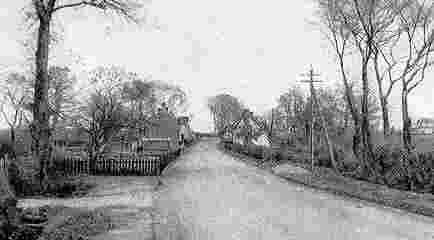
Martha and her family lived in Willow cottages shown on the right of the picture.
Arthur joined up in 1914. A list for Langenhoe appearing in the Essex County Standard of December 19th 1914 shows C. and L. Brooks in the Army. (Charles & Arthur). David, the other brother, appears in the 23rd May edition as having joined the 9th Battalion of the East Surrey Regiment. Their cousin Peter Rogers (see under World War 2) was to die with the East Surrey Regiment in Italy. His medal entitlement does not give a date for entry into France but it would have been in 1916 or 1917.
It is probable that both Arthur and James Thomson, who was also from the villages and a member of the 4th Battalion were present at the battle of Saint Eloi on the 27th March 1917. The British drove a number of mines under the strongest enemy positions around Ypres. The Germans held a mound between two forking roads; they had wired the position heavily and behind the thick wire was a 9 foot parapet with many machine guns. The position was held by a young Jaeger Regiment from Schleswig-Holstein, which included many Danish lads.
The sappers blew the charges at 4.30 am and the mound erupted. At this point the 4th Battalion Royal Fusiliers and the 1st Battalion Northumberland Fusiliers charged with fixed bayonets. They surmounted the wire and parapet by climbing over each others shoulders. A VC was awarded in this action to the Reverend Edward Noel Mellish, a padre with the units, who went with the attack. He rescued many injured men from the open and brought them to safety from the German artillery, who brought heavy fire down on the position once it fell into British hands. Once the 2 Battalions of Fusiliers had taken the position it was handed to the Canadians, who consolidated it.
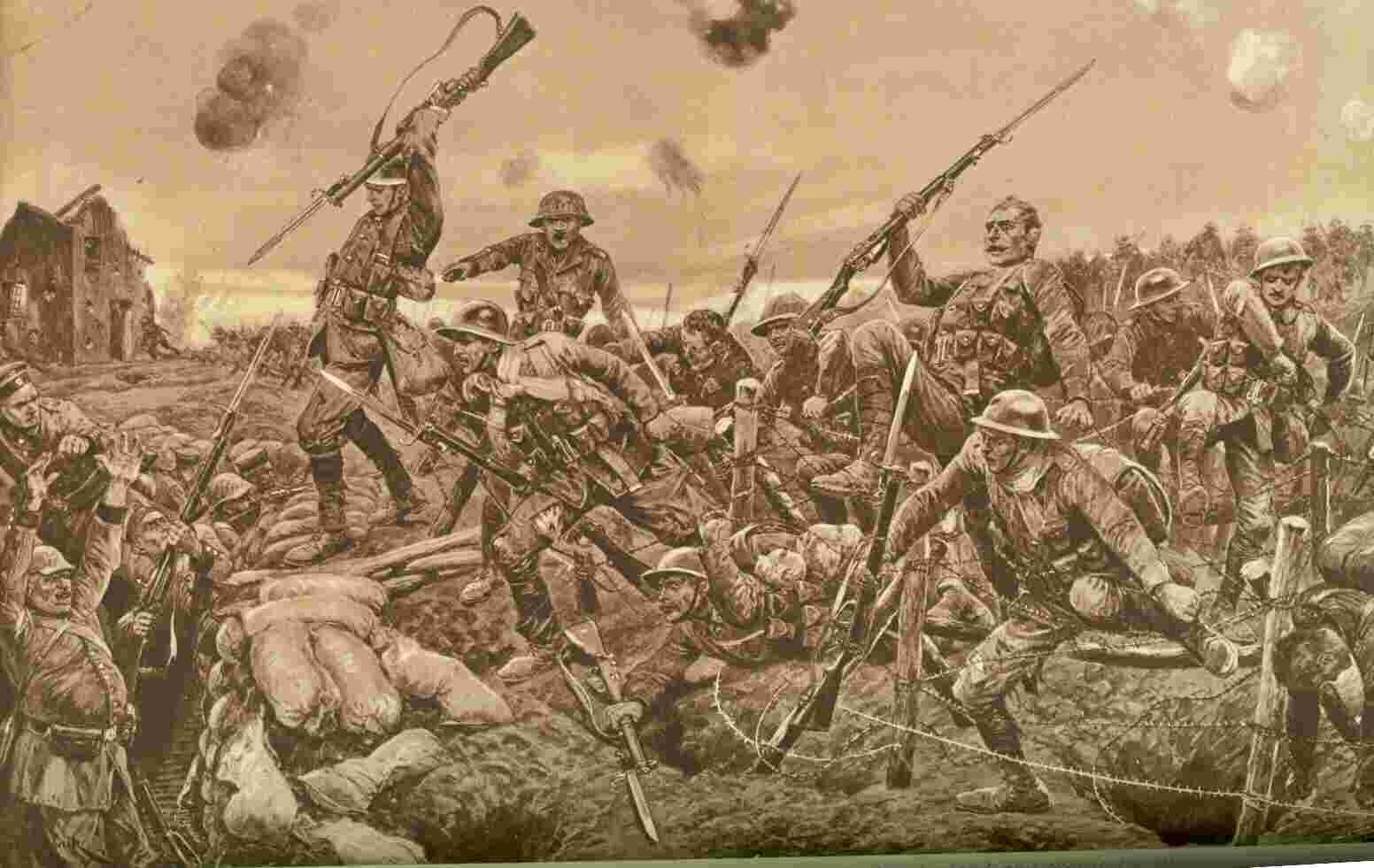
The attack at St. Eloi
The circumstances of Arthur's death are not clear. His body was not recovered. Thus he appears to have gone missing around the time he is listed killed. However, there is no specific mention in the Battalion War Diaries of the casualties on this date and it is possible he was lost on the 17th rather than the 16th shown by the CWGC :-
"16th August 1917; The Battalion relieved 13th "King's" in the LAGNICOURT Section as before. Considerable movement seen N.E. of QUEANT & PRONVILLE - small parties working on trenches about 3500 yards distant.- working parties from the Battalion employed in installing gas cylinders under direction of O.C. "G" Special Company R.E.
LAGNICOURT 17th August 1917
Orders for a gas attack on the SUNKEN ROAD and MAGPIE'S NEST received from Brigade; Zero Hour 11p.m. POSTS evacuated during the attack....... At 8.30 p.m. instructions were received to follow up the gas attack with a patrol to ascertain whether the discharge was effectual & if possible to secure identities. A patrol under 2/Lt MARTYR with 25 other ranks accompanied MAJOR WINNINGTON BARNES & LT. LAYCOCK O.C. "G" Special Company R. E. the latter to find out whether any pockets of gas remaining........on arrival at point D13.b4.2 they were rifle grenaded and owing to width of the wire & time at their disposal had to return. At 12 midnight the artillery shelled the MAGPIE'S NEST & SUNKEN ROAD.- no retaliation from the Germans."
Arthur was entitled to the British War Medal, the Allied Victory Medal.
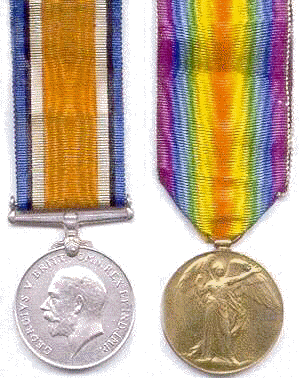
Commemorative Information
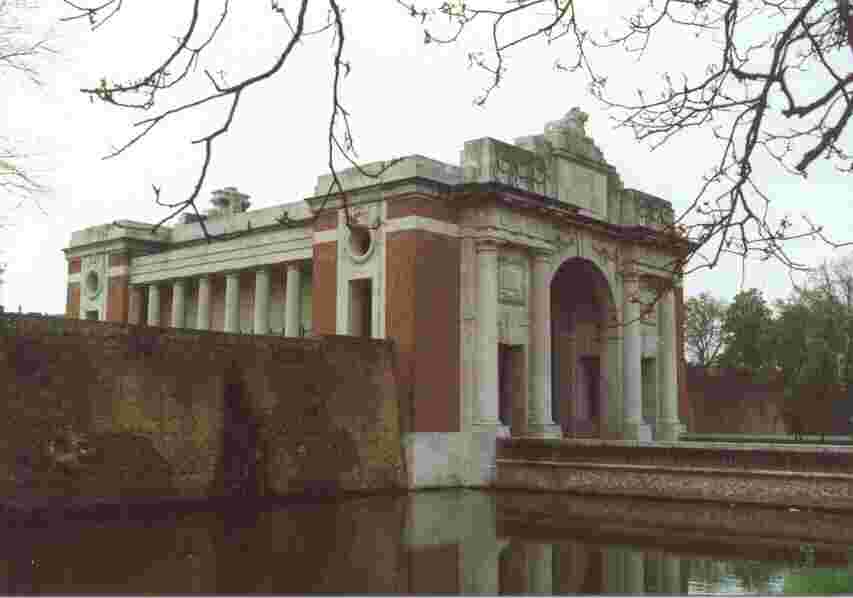
Cemetery: YPRES (MENIN GATE) MEMORIAL
Ieper, West-Vlaanderen, Belgium
Grave or Reference Panel Number: Panel 52
Location: Ypres (now Ieper) is a town in the Province of West Flanders. The Memorial is situated at the eastern side of the town on the road to Menin (Menin) and Courtrai (Kortrijk). Each night at 8 pm the traffic is stopped at the Menin Gate while members of the local Fire Brigade sound the Last Post in the roadway under the Memorial's arches. Visiting Information: The Panel Numbers quoted at the end of each entry relate to the panels dedicated to the Regiment served with. In some instances where a casualty is recorded as attached to another Regiment, his name may alternatively appear within their Regimental Panels. Please refer to the on-site Memorial Register Introduction to determine the alternative panel numbers if you do not find the name within the quoted Panels. Historical Information: The Menin Gate is one of four memorials to the missing in Belgian Flanders which cover the area known as the Ypres Salient. Broadly speaking, the Salient stretched from Langemarck in the north to the northern edge in Ploegsteert Wood in the south, but it varied in area and shape throughout the war. The Salient was formed during the First Battle of Ypres in October and November 1914, when a small British Expeditionary Force succeeded in securing the town before the onset of winter, pushing the German forces back to the Passchendale Ridge. The Second Battle of Ypres began in April 1915 when the Germans released poison gas into the Allied lines north of Ypres. This was the first time gas had been used by either side and the violence of the attack forced an Allied withdrawal and a shortening of the line of defence. There was little more significant activity on this front until 1917, when in the Third Battle of Ypres an offensive was mounted by Commonwealth forces to divert German attention from a weakened French front further south. The initial attempt in June to dislodge the Germans from the Messines Ridge was a complete success, but the main assault north-eastward, which began at the end of July, quickly became a dogged struggle against determined opposition and the rapidly deteriorating weather. The campaign finally came to a close in November with the capture of Passchendale. The German offensive of March 1918 met with some initial success, but was eventually checked and repulsed in a combined effort by the Allies in September. The battles of the Ypres Salient claimed many lives on both sides and it quickly became clear that the commemoration of members of the Commonwealth forces with no known grave would have to be divided between several different sites. The site of the Menin Gate was chosen because of the hundreds of thousands of men who passed through it on their way to the battlefields. It commemorates those of all Commonwealth nations except New Zealand who died in the Salient before 16 August 1917. Those United Kingdom and New Zealand servicemen who died after that date are named on the memorial at Tyne Cot, a site which marks the furthest point reached by Commonwealth forces in Belgium until nearly the end of the war. Other New Zealand casualties are commemorated on memorials at Buttes New British Cemetery and Messines Ridge British Cemetery. The YPRES (MENIN GATE) MEMORIAL now bears the names of more than 54,000 officers and men whose graves are not known. The memorial, designed by Sir Reginald Blomfield with sculpture by Sir William Reid-Dick, was unveiled by Lord Plumer in July 1927.
10/26/02 date last updated
References
His Service Record has not survived at the PRO.
The picture of the attack on St. Eloi plus the account are taken from "The Great War" volume 6 . Authors & Publisher are not given.
The account of the action in August is from the Battalion's War Diary kindly provided by the Royal Fusilier's Museum & Archives, H. M. Tower of London.
The picture of Willow cottages is from the Brian Jay collection. The picture of the road in front of Willow cottages is from the May Harrison collection. .
Details on Martha Mountford were provided by Mrs. Betty Forster and from Parish records. Details on Arthur are from the CWGC.
**********************************************************
These pages are dedicated to the memory of the Fallen from the two World Wars, who lived in Abberton & Langenhoe.. Prepared by Saint Andrew's Parochial Church Council. November 11th 2000